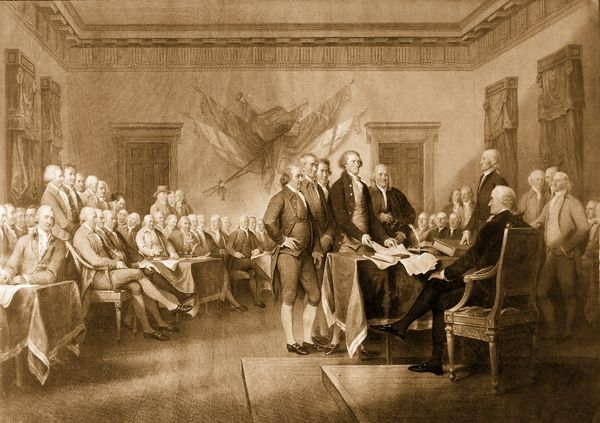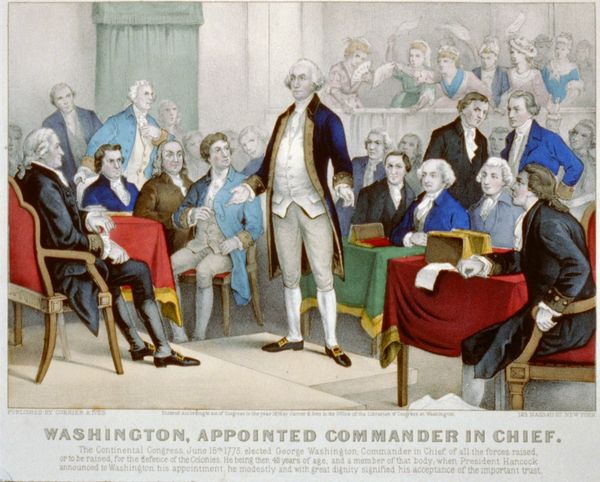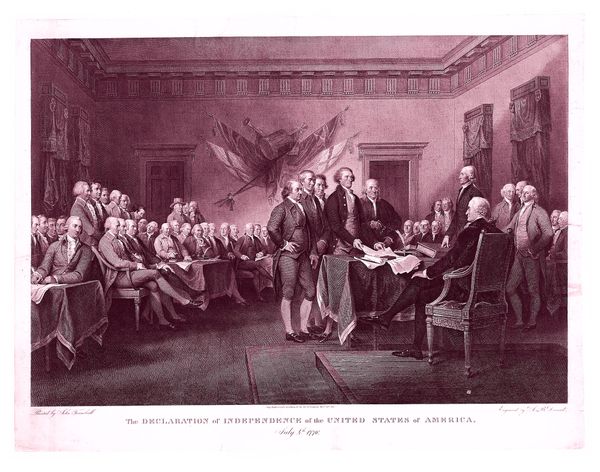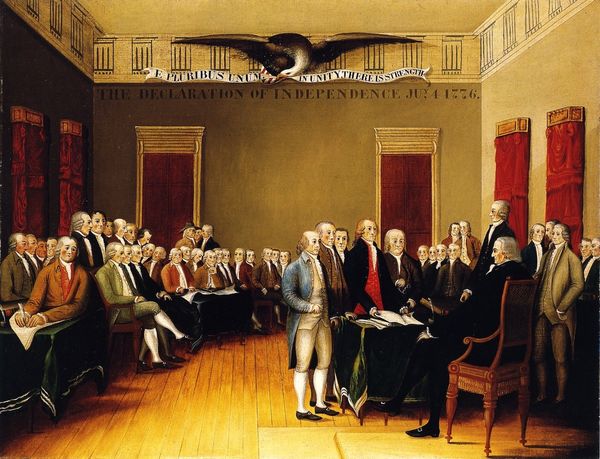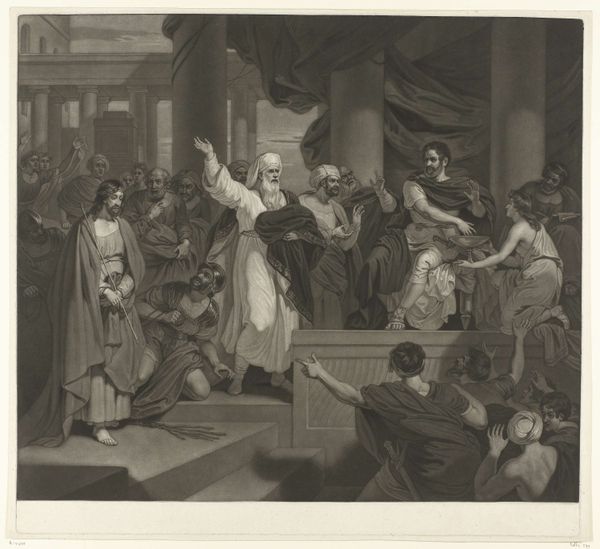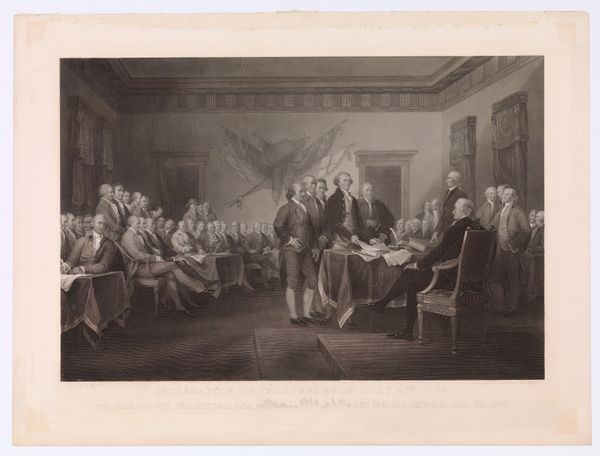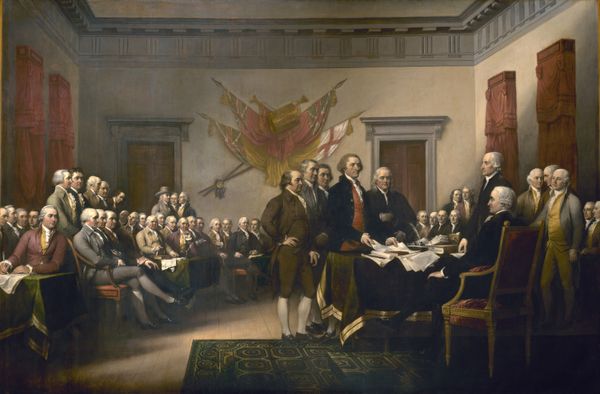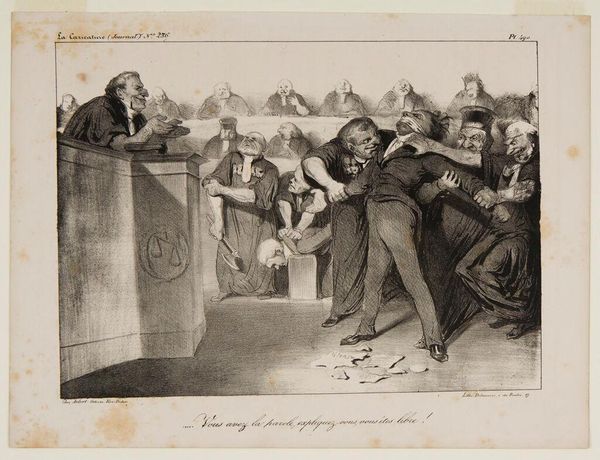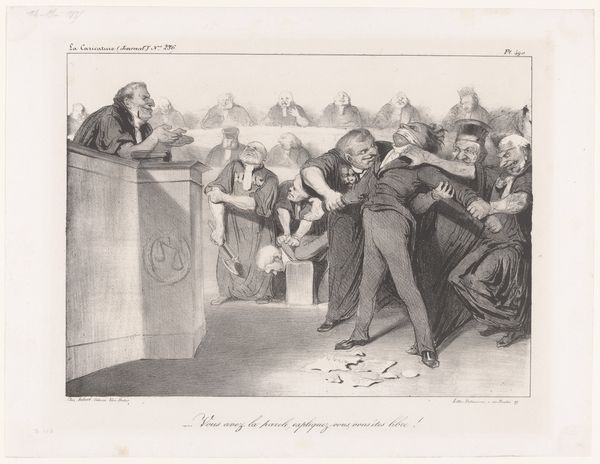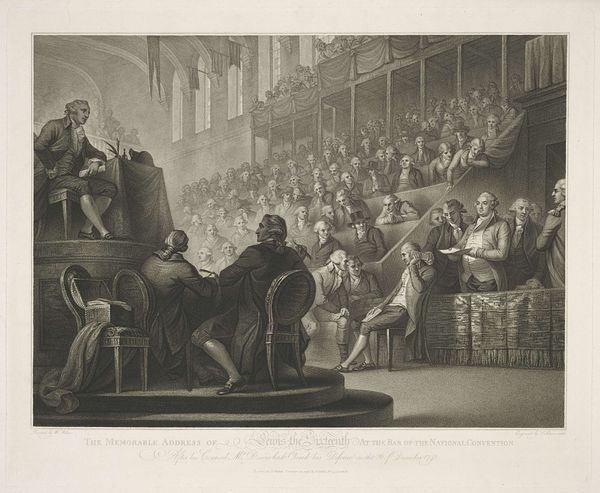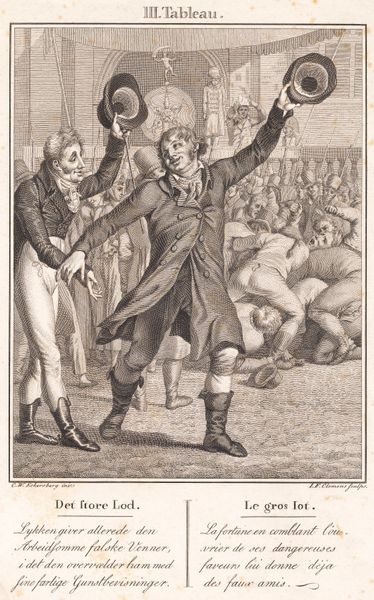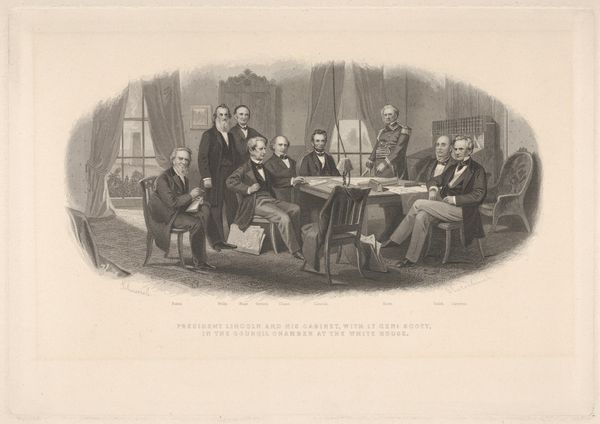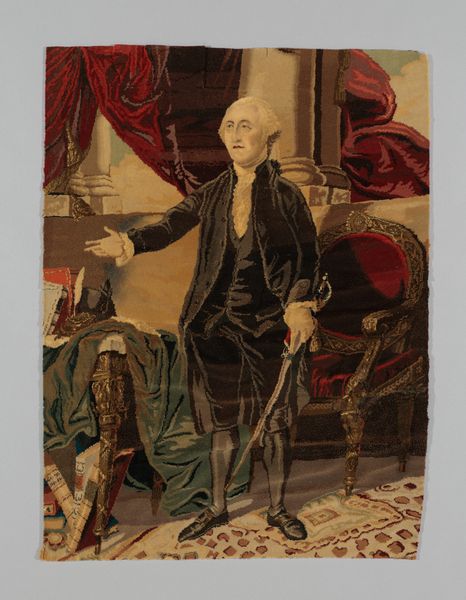
lithograph, print
#
lithograph
# print
#
genre-painting
#
history-painting
Copyright: Public domain
Curator: Well, here we are in front of "Patrick Henry speaking before the Virginia Assembly," a lithograph print made by Currier and Ives in 1876. It’s a stirring depiction of a pivotal moment in American history. Editor: Stirring is one word for it! My first thought is 'melodrama.' All those arms raised in… is it agreement? Shock? It's a real stage production. Sort of grandiose, even. Curator: It definitely reflects the artistic conventions of its time. Remember, prints like these were widely circulated, acting almost like news images for the masses. Currier and Ives capitalized on a hunger for historical narratives, and they weren't afraid to amplify the drama. Look how Henry commands the room, bathed in light, the clear hero. It’s history designed for mass appeal, imbued with the ideology of the period. Editor: Hero, yes, but there is something...cartoonish about it? That feels too harsh maybe, but there’s such a performative feel to everyone here. You almost expect someone to break out in song. Are we meant to see individuals or are they symbols within the context of their position? I can’t help thinking about how different an artist in that assembly might view and respond to Patrick's passion and delivery. Curator: Well, part of its enduring appeal, I believe, comes from how accessible it is. The composition is dynamic but readable; the message, clearly spelled out by the printed title "Give me liberty, or give me death!", cuts through any ambiguity. Its success lies precisely in this potent emotional register. That slogan made Henry famous and still echoes through our politics. This piece captured that moment and turned it into iconography for many years. Editor: Iconography or cliché, perhaps? Look, I get the appeal. But art should poke and prod – to question these so called historical milestones. It should unpick their pomp and look to alternative views of the time; that would bring more justice to it. Curator: And isn't that tension precisely what makes engaging with historical art so fascinating? It reveals our evolving relationship with the past, and the politics of historical narrative as its conveyed across society. Editor: Absolutely! Art should hold a mirror up to society, warts and all. And in pieces like this, it’s that tension, that little nagging feeling of, "Wait, is it really that simple?" that makes you think, makes you question the myth.
Comments
No comments
Be the first to comment and join the conversation on the ultimate creative platform.
